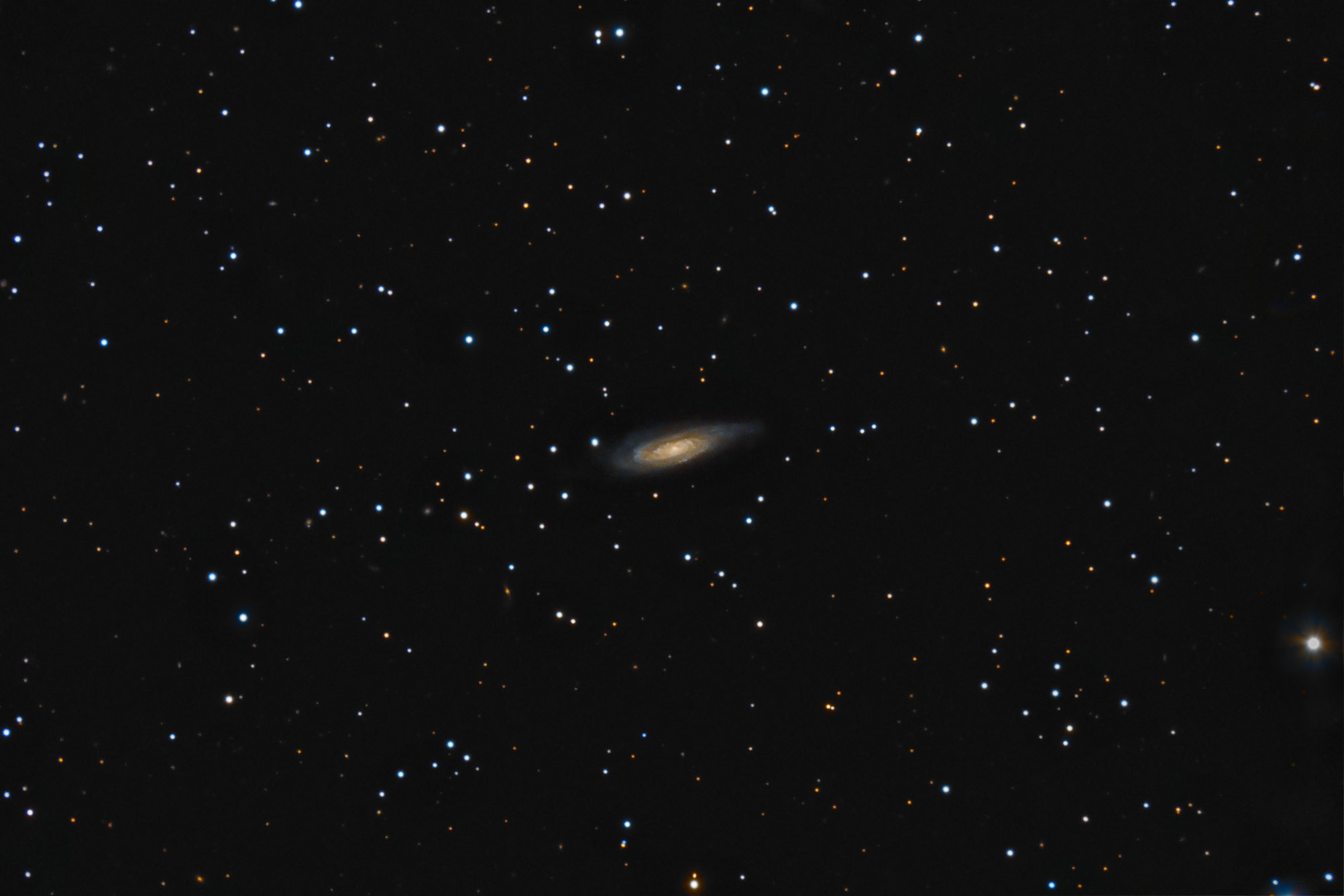| Description | Images |
Object name: NGC0674Designation(s): NGC0674, NGC0697, NGC 697/674 is a spiral galaxy in northwestern Ares about 130 million light-years distant by redshift and 110 by the consensus of 17 non-redshift measurements at NED. It is considered a member of the NGC 691 galaxy group which average about the same redshift as that of this galaxy. Still, it is hard to argue with a rather nicely grouped non-redshift measurements that have a standard deviation of only 9 million light-years. So I'll split the difference and say 120 million light-years. That makes its size nearly 200,000 light-years including faint plumes my horrid night barely showed. Unfortunately, they don't show in the color image. Using the size seen in the posted image it is still very large at a bit under 160,0000 light-years across. So this is a major galaxy. While I've not yet taken NGC 691 its angular size in catalogs is smaller than NGC 697-74. NGC 697 is classified as SAB(r)c: by NED and the NGC Project and Seligman. It's unusual when those three agree though Seligman uses a question mark for a colon they two mean essentially the same, a bit of doubt in the classification as a c arm structure galaxy. Not surprising given the oblique angle we see it at. For a hint of the plume, especially on the east side see http://cseligman.com/text/atlas/ngc674wide.jpg. Related Designation(s):2MASS J01511750+2221297, 2MASX J01511756+2221286, 2MASXi J0151173+222129, AKARI J0151176+222129, CGCG 0148.5+2206, CGCG 482-027, HDCE 0094 NED006, HIPASS J0151+22, IRAS 01485+2206, IRAS F01485+2206, KIG 0067:[VOV2007] 002, LDCE 0109 NED006, LGG 034:[G93] 006, MCG +04-05-022, NGC 0674, NGC 0697, NGC0674, NGC0697, NSA 130540, NVSS J015117+222127, PGC 006848, UGC 01317, USGC U078 NED07, UZC J015117.4+222128, [BTW2003] J0151+2216, [M98j] 029 NED07, |
